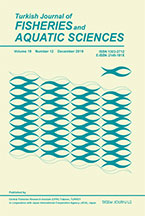Genetics of Aquatic Organisms
2022, Vol 6, Num, 3 (Pages: GA494)
Liver Transcriptome and Molecular Responses of Giant Gourami (Osphronemus goramy) Fed with Different Dietary Carbohydrate Levels
Dian Novita Sari 1 ,Julie Ekasari 1 ,Hasan Nasrullah 1 ,Muhammad Agus Suprayudi 1 ,Alimuddin Alimuddin 1
1 IPB University Bogor Agricultural University, Department of Aquaculture, Jl. Agatis, IPB Dramaga Campus, Bogor
DOI :
10.4194/GA494
Viewed :
6159
-
Downloaded :
8282
Giant gourami (Osphronemus goramy) has been known to have a high ability to utilize high dietary carbohydrates. However, its molecular information related to carbohydrate metabolism is still limited. The present study elucidated Giant gourami's liver transcriptome and molecular responses to high dietary carbohydrates. Two semi-purified diets with different levels of dietary carbohydrate, normal carbohydrate (34%, N34) and high carbohydrate (53%, H53), were offered to the fish for 60 days. A total of 87,430,553 clean reads were collected and assembled into 49,034 cDNA contigs. Annotation was performed, and a total of 33,104 unigenes were obtained. High dietary carbohydrates generally down-regulated the differentially expressed genes (DEGs). The genes expression related to glycolysis and the antioxidant system were significantly upregulated (P<0.05). Meanwhile, the genes expression related to insulin signaling and gluconeogenesis were significantly downregulated (P>0.05). The results showed that Giant gourami has several adaptabilities for high carbohydrates. The upregulation of the glycolytic, gpx, and noa1 genes, downregulation of insulin signaling, and gluconeogenic genes indicated a good glucose homeostasis maintenance in Giant gourami.
Keywords :
Antioxidant system Gene expression Metabolic stress RNA-seq Semi-purified diet
















